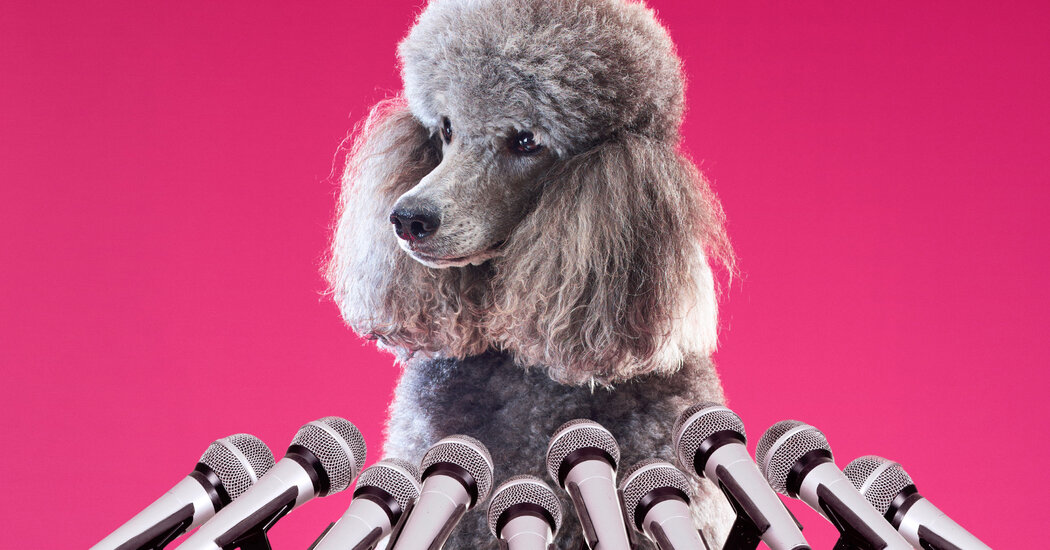For Wynne, the buttons are not only entirely superfluous to the communication humans and dogs already have but also potentially a distraction from their natural barks and howls, their tail wags and tucks. “I actually think that having dogs press buttons runs the risk of obscuring dogs’ voices in the sense of dogs’ expressions of themselves,” Wynne said. Rossano disagrees with this notion. “It doesn’t mean that they lose their first language,” he said. “They’re still dogs. They still do their thing, and they still bark at people, and they still scratch the door, and they still try to get toys. It’s just that, in addition, they have another way to communicate, and sometimes they choose that way to communicate, which I think is interesting to study.”
Pet owners will tell you that their dogs love them unrequitedly, that they feel guilty, that they make jokes. According to the science, though, dogs don’t necessarily do any of these things. They may whine when you leave the house, but separation anxiety isn’t the same as missing you. They can tell when a human is sad, but scientifically speaking, that doesn’t mean they care. What’s undeniable, though, is the emotional connection that humans feel with our pets. Maybe our language-loving brain needs that bond to manifest in words in order to feel real. Juliane Kaminski, a comparative psychologist who led the Rico study, shared one of her more recent findings with me: Dogs have a muscle around their eyes for the sole purpose of making big, sad puppy-dog faces. Wolves do not have this muscle. “This eyebrow movement most likely has no meaning for the dogs,” Kaminski told me. But it may have meaning for humans: It makes us want to take care of the poor things. When humans and dogs look each other in the eye, each species produces oxytocin, the same hormone that bonds mothers to their children.
Kaminski believes that dogs have evolved into creatures we treat like our own children and that the buttons feed into this impulse. “It’s this trap we are falling into,” she said. “We evolutionarily created this niche for infants that we now have designed this other species to fit right into. People can’t help themselves. They see the dog pressing the I LOVE YOU button, and they’re like, ‘We’re having a conversation.’”
In August, I drove up an unpaved road about three hours east of Tacoma to visit Alexis Devine and Bunny. Devine and Leo Trottier have sold more than two million buttons. Earlier this year, she moved into a stylish two-story cabin on a 55-acre property to give her dogs “a life with more agency.” It was fire season, and the hills around the cabin were covered in parched yellow brush. An elk moved on the opposite slope. Mount Rainier, wreathed in snow, loomed in the distance. As soon as I parked, Otter and Tenrec, Devine’s second and third dogs, bounded to the car. Devine kept Bunny on a leash, hanging back a safe distance.
Since moving to the cabin, Bunny’s chronic anxiety and gastrointestinal issues had calmed. She was less fearful. Upon seeing wildfire smoke around the cabin earlier that year, she pressed FIRE but not CONCERNED. Her temper was better. She’d been playing with Otter rather than going UGH about him. About Tenrec, a tiny papillon who looked less like a dog than some kind of plushy gremlin, she was mostly confused. “She thinks he’s a cat; she’s said that several times,” Devine said.
Source link https://www.nytimes.com/2025/01/06/magazine/dog-buttons-animal-communication.html

